September 27, 2012 at 10:51 am

Red Flying Squid (Ommastrephes bartramii) in flight. It expands its body to make the most of the propulsion and later adjusts itself to become more aerodynamic.
When you think of squid, what do you think of? You may be repulsed by their image, you might get hungry at the thought of eating them, or you may forget what squids really even look like. One thing that doesn’t cross people’s minds however is “I wonder if they can fly?” Ask almost anyone that question and they will most likely ask you to get serious. “Of course they cant fly,” they will say, ” It’s just another fish in water!” Well, besides the fact that they do indeed live in water, these people are wrong! They don’t mean to be but facts are facts! Not only are squids not fish (they are mollusks) but they CAN fly! No, they haven’t sprouted wings since the last time you checked but with the same jet propulsion they use when moving through water. Flying squids are truly a wonderment because as retired Oceanographer Richard Young says, “It’s the first time we’ve ever had any information comparing flight in air with flight in water” and it is here that we have untapped knowledge that will one day lead to great innovation.
Read More »
By Zurita Jeffrey
|
Posted in Student post
|
Tagged jet, squid
|
September 27, 2012 at 12:10 am
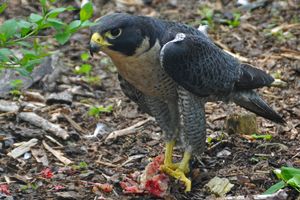 The Peregrine Falcon is the fastest bird known to man. At speeds approaching 200 miles per hour while diving, it surely deserves its title. This may seem surprising for a bird about the size of a simple crow, but the falcon accomplishes this feat by tucking its wings into its body,reducing its angle of attack--the angle between the resultant relative airflow on the falcon's wing and a chord going through a cross section in the falcon's wing--and thereby reducing its drag coefficient to .18. The lower the drag coefficient, the higher the speed the falcon can attain. The Falcon's weight also contributes the maximum speed it can attain. In addition to its low drag coefficient, the peregrine falcon has powerful chest muscles and a long wingspan ranging from 1 to 1.1 meters. Read More »
The Peregrine Falcon is the fastest bird known to man. At speeds approaching 200 miles per hour while diving, it surely deserves its title. This may seem surprising for a bird about the size of a simple crow, but the falcon accomplishes this feat by tucking its wings into its body,reducing its angle of attack--the angle between the resultant relative airflow on the falcon's wing and a chord going through a cross section in the falcon's wing--and thereby reducing its drag coefficient to .18. The lower the drag coefficient, the higher the speed the falcon can attain. The Falcon's weight also contributes the maximum speed it can attain. In addition to its low drag coefficient, the peregrine falcon has powerful chest muscles and a long wingspan ranging from 1 to 1.1 meters. Read More »
By Daniel Vasilyonok
|
Posted in Student post
|
Tagged birds, dive, peregrine falcon, speed
|
September 26, 2012 at 11:59 pm
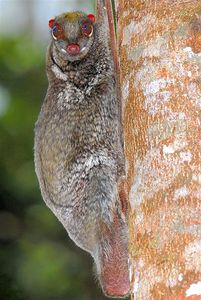 Although commonly referred to as flying lemurs, colugos glide rather than fly. In addition, they are in fact not lemurs at all, rendering there name completely misleading. There are two species of colugos, one is The Malayan flying lemur and the other is the Philippines flying lemur. Together these two species make up the Dermoptera order.
Although commonly referred to as flying lemurs, colugos glide rather than fly. In addition, they are in fact not lemurs at all, rendering there name completely misleading. There are two species of colugos, one is The Malayan flying lemur and the other is the Philippines flying lemur. Together these two species make up the Dermoptera order.
Colugos are commonly found in Malaysia, Thailand, Singapore, and the Philippines.They are roughly the size of a cat and weigh about 1 – 1.75 kilograms. They are about 36-43cm long with a tail that is anywhere from 22-27cm long and can measure about 70cm across. These dimension gives them a wing loading of about 30 N/m2. This means that the wing loading of the colugo is similar to that of the Falco Dickinsoni and the Northern flicker.
Read More »
By Joseph Tierney
|
Posted in Student post
|
Tagged colugo, gliding
|
September 26, 2012 at 10:52 pm
 The wing suit, the closest man has gotten to the dream of unassisted flight, was originally developed in the 1930s to fabric between the legs and from the arms to the waist. The originals were made out of wood, canvas, steel, and whale bone (as you can imagine, not very reliable). increase horizontal movement. They were redeveloped in the 1990s to sport its modern look and design of connecting
The wing suit, the closest man has gotten to the dream of unassisted flight, was originally developed in the 1930s to fabric between the legs and from the arms to the waist. The originals were made out of wood, canvas, steel, and whale bone (as you can imagine, not very reliable). increase horizontal movement. They were redeveloped in the 1990s to sport its modern look and design of connecting
Read More »
By Daniel Schwartz
|
Posted in Student post
|
Tagged flying squirrel, gliding, wingsuit
|
September 26, 2012 at 10:20 pm
Helicopters are a very unique human-made flying machine. Unlike airplanes, which use wings and propellers to produce lift and thrust separately, helicopters use a single rotor at the top of the aircraft that produces both thrust and lift. This makes them more analogous to birds, which use twisting of their wings to produce lift and thrust simultaneously.
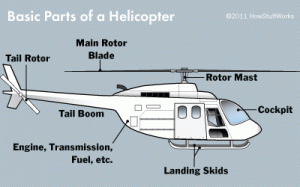
science.howstuffworks.com
As with all flying machines, a machine that could hover in the air with a propeller on the top was constantly sought after until its initial invention in the 1930s. The ancient Chinese invented a spinning top that would hover if spun. Leonardo da Vinci designed a human-powered machine called the "flying screw" that may have worked if the contraption had been lighter. A Russian and a Frenchman made further advancements in the 18th century. Igor Sikorsky, however, was a pioneer in the field of helicopters, and after some failed first attempts, invented the first helicopter in the 1930s.
Read More »
By Natalie David
|
Posted in Student post
|
Tagged helicopters, hovering
|
September 26, 2012 at 9:40 pm
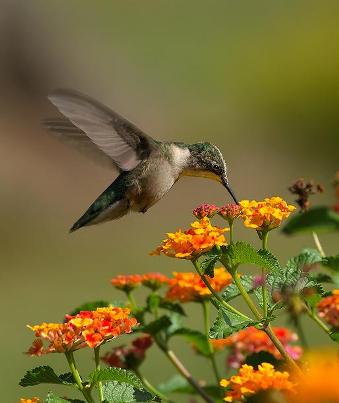
Hummingbird obtaining nectar from a flower
We as humans have always marveled at the sight of birds and insects soaring through the air. But eventually we achieved flight with airplanes and even hovering with helicopters. One comes to think, do birds marvel at the wonder of the hummingbirds?
Hummingbirds are quite a special species of birds. Like many other birds, hummingbirds can fly in the air, however, they have an ability that all other birds do not. Hummingbirds have the ability to hover in mid air for prolonged periods of time.
Read More »
By Tony Liang
|
Posted in Student post
|
Tagged birds, hovering, hummingbird
|
September 26, 2012 at 7:58 pm
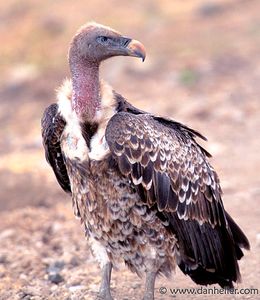 We’ve all traveled in a plane, whether it was just for business or for vacation. We’ve all been thousands of feet up in the air in the comfort of an airplane admiring the beauty of the ground below us. Unfortunately, none of us will ever be able to experience what it’s like to soar as high as the Ruppell’s Griffon Vulture; the highest flying bird ever recorded. This vulture is one of the largest scavengers alive and without its presence in the skies of Africa; the wilderness would be littered with waste. These birds tend to move in flocks and devour the remains of leftover kills and are useful for recycling rotting flesh. Unfortunately, this species has become endangered as the number of vultures slowly starts to decline.
We’ve all traveled in a plane, whether it was just for business or for vacation. We’ve all been thousands of feet up in the air in the comfort of an airplane admiring the beauty of the ground below us. Unfortunately, none of us will ever be able to experience what it’s like to soar as high as the Ruppell’s Griffon Vulture; the highest flying bird ever recorded. This vulture is one of the largest scavengers alive and without its presence in the skies of Africa; the wilderness would be littered with waste. These birds tend to move in flocks and devour the remains of leftover kills and are useful for recycling rotting flesh. Unfortunately, this species has become endangered as the number of vultures slowly starts to decline.
Read More »
By nrjbasu
|
Posted in Student post
|
September 26, 2012 at 5:40 pm
We touch keratin every day of our lives. It makes up our hair, nails, and some clothing. The keratin present is mammals is called α-helix keratin, which you can think of protein folded in a helix. The same protein that makes up these materials is what the feathers of a bird, but it is folded differently. Imagine a helix stretched out and then made into sheets, we will call this β-sheet keratin.

It is very interesting to note that some of the same proteins that make up our humans bodies, keratin and melanin, also make up bird feathers.
Read More »
By ddecarli
|
Posted in Student post
|
Tagged birds, feathers, mechanics
|
September 26, 2012 at 3:31 pm
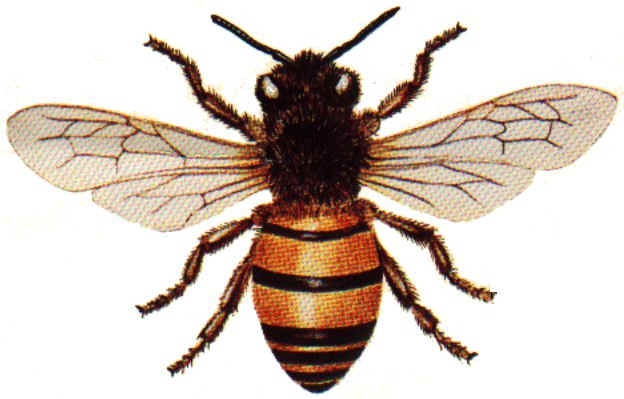
The honeybee, one of the world’s major pollinators. Admirably, about one-third of all our produce comes from the bees’ ability to effectively pollinate plants. At times it seems so simple, the way the Honey Bee flies, from hive, to plant, and back again to the hive. However, the science behind Bee flight is actually quite complex.
One aspect of honeybee flight that seems the most peculiar would be the speed at which it beats its wings. According to research, the smaller an animal is, the faster it flaps its wings. In the case of the honeybee (a relatively large insect), it flaps its wings at a rate of about 230 beats per second, and over a short arc of about 90 degrees.
Read More »
By dejorh
|
Posted in Student post
|
Tagged honeybee, insects
|
September 26, 2012 at 2:36 pm
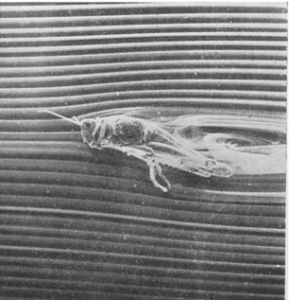
A desert locust in a wind tunnel test.
Desert Locusts are capable of flying vast distances without spending much energy. This amazing feature of these creatures have been studied by scientists along the last decades. The answer to the question as to how do they do it is a bit tricky, but it is also very interesting to see how such a small animal can be so efficient.Factors that have to be considered vary from wing motion, metabolic rates and the amount of lift.
Read More »
By azubilla
|
Posted in Student post
|
Tagged insects, locusts, metabolism
|


 Although commonly referred to as flying lemurs, colugos glide rather than fly. In addition, they are in fact not lemurs at all, rendering there name completely misleading. There are two species of colugos, one is The Malayan flying lemur and the other is the Philippines flying lemur. Together these two species make up the Dermoptera order.
Although commonly referred to as flying lemurs, colugos glide rather than fly. In addition, they are in fact not lemurs at all, rendering there name completely misleading. There are two species of colugos, one is The Malayan flying lemur and the other is the Philippines flying lemur. Together these two species make up the Dermoptera order.

 We’ve all traveled in a plane, whether it was just for business or for vacation. We’ve all been thousands of feet up in the air in the comfort of an airplane admiring the beauty of the ground below us. Unfortunately, none of us will ever be able to experience what it’s like to soar as high as the Ruppell’s Griffon Vulture; the highest flying bird ever recorded. This vulture is one of the largest scavengers alive and without its presence in the skies of Africa; the wilderness would be littered with waste. These birds tend to move in flocks and devour the remains of leftover kills and are useful for recycling rotting flesh. Unfortunately, this species has become endangered as the number of vultures slowly starts to decline.
We’ve all traveled in a plane, whether it was just for business or for vacation. We’ve all been thousands of feet up in the air in the comfort of an airplane admiring the beauty of the ground below us. Unfortunately, none of us will ever be able to experience what it’s like to soar as high as the Ruppell’s Griffon Vulture; the highest flying bird ever recorded. This vulture is one of the largest scavengers alive and without its presence in the skies of Africa; the wilderness would be littered with waste. These birds tend to move in flocks and devour the remains of leftover kills and are useful for recycling rotting flesh. Unfortunately, this species has become endangered as the number of vultures slowly starts to decline.

